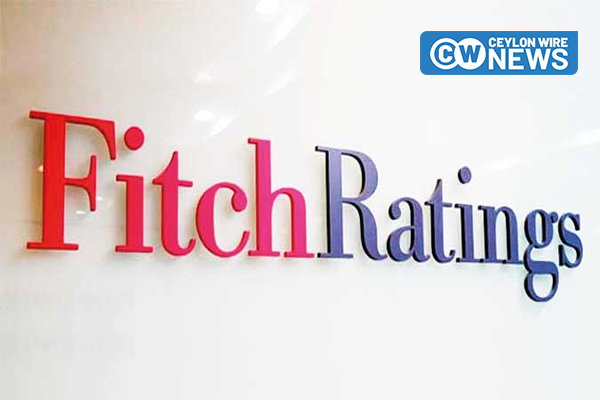Fitch Ratings has affirmed the National Insurer Financial Strength (IFS) Ratings of the following insurers and removed them from Rating Watch Negative (RWN). The Outlook is Stable.
– Sri Lanka Insurance Corporation Limited (SLIC) at ‘A(lka)’
– Continental Insurance Lanka Limited at ‘A-(lka)’
– HNB Assurance PLC at ‘A-(lka)’
– HNB General Insurance Limited at ‘A-(lka)’
– People’s Insurance PLC at ‘A-(lka)’
– Co-operative Insurance Company PLC at ‘BB(lka)’
– Construction Guarantee Fund at ‘BB(lka)’
Fitch has also downgraded National Insurance Trust Fund Board’s (NITF) National IFS Rating to ‘BBB(lka)’ from ‘BBB+(lka)’ and removed it from RWN. The Outlook is Stable.
SLIC’s IFS Rating of ‘CC’ on RWN was not considered in this review.
A full list of rating actions is at the end of this rating action commentary.
KEY RATING DRIVERS
Stable Outlook: The removal of the RWN on the insurers’ national ratings reflects our view that near-term investment and liquidity risks have been reduced substantially, evident from the upgrade of Sri Lanka’s Long-Term Local-Currency Issuer Default Rating (IDR) to ‘CCC-‘ from ‘RD’ and the subsequent removal of the RWN on Fitch-rated banks. Please see Fitch Upgrades Sri Lanka’s Long-Term Local-Currency IDR to ‘CCC-‘, published 28 September 2023, and Fitch Affirms Ratings on 15 Sri Lankan Banks; Removes Watch Negative; CBL on Negative Outlook, published 5 October 2023.
NITF Downgraded: The one-notch downgrade of NITF’s rating reflects the insurer’s inability to renew its external reinsurance arrangements, resulting in weaker risk-management practices. NITF is the sole domestic reinsurer and receives 30% of reinsurance cessations from all domestic non-life operators. It has faced continued delays in renewing its reinsurance contracts and currently does not have any retrocession cover for its inwards reinsurance business. This, alongside continued capital weakness in certain business lines, exposes NITF’s capital and earnings to greater volatility.
Easing Investment and Liquidity Risks: The government has successfully restructured its local-currency sovereign debt while the holdings of treasury securities of banks and insurers have been excluded from the domestic debt optimisation programme. The investment and liquidity risk profiles of Sri Lankan insurers are closely linked with that of the sovereign and banks as their investment portfolios are dominated by local-currency fixed-income securities issued by the government, corporate debt and deposits with financial institutions.
The restructuring of Sri Lanka’s foreign-currency debt, including defaulted sovereign bonds, has not been completed, but we believe that incremental risks to Fitch-rated insurers’ capital from the restructuring are likely to be manageable, given their limited exposure to these bonds (0.5% of invested assets at end-March 2023). The domestic banking system’s foreign-currency liquidity has improved from the crisis period and should support insurers’ foreign-currency obligations such as premium payments to foreign reinsurers and claim obligations arising from foreign-currency policies.
Better Operating Conditions: We expect the pressure on insurers’ regulatory capital profiles to ease alongside the alleviated investment and liquidity risks. Fitch-rated insurers’ regulatory capital ratios have been well above the regulatory minimum of 120%. Insurers’ recent underwriting profitability has deteriorated due to higher claim costs and expenses but we do not expect a material worsening over the next 12-18 months as inflationary pressures have started to ease. Insurers have focused on growing non-motor business lines amid continued restrictions on the import of motor vehicles.
RATING SENSITIVITIES
Factors that could, individually or collectively, lead to negative rating action/downgrade:
NITF
– rising investment and asset risks, including a downgrade of the ratings of financial institutions or the sovereign;
– deterioration in the RBC ratio to below 250%, or continued weakness in the capital positions of non-strike, riot, civil commotion and terrorism lines, for a sustained period;
– deterioration in the combined ratio to above 103% for a sustained period;
– significant weakening in NITF’s company profile, such as a large reduction in government-related business.
SLIC
– rising investment and asset risks, including a downgrade of the ratings of financial institutions or the sovereign;
– sharp deterioration in the risk-based capital (RBC) ratios for both life and non-life insurance for a sustained period;
– deterioration in financial performance, including the non-life combined ratio staying above 103%, for a sustained period.
People’s Insurance
– rising investment and asset risks, including a downgrade of the ratings of financial institutions or the sovereign;
– deterioration in the regulatory RBC ratio to below 220% for a sustained period;
– sustained deterioration in financial performance, or weaker risk management practices.
HNB Assurance/HNB General Insurance
– rising investment and asset risks, including a downgrade of the ratings of financial institutions or the sovereign;
– deterioration in the RBC ratio below 260% for life insurance and 220% for non-life insurance for a sustained period;
– deterioration in financial performance, or weaker risk management practices.
Continental Insurance Lanka
– rising investment and asset risks, including a downgrade of the ratings of financial institutions or the sovereign;
– deterioration in the RBC ratio to below 230% for a sustained period;
– sustained deterioration in financial performance, or weaker risk management practices.
Co-operative Insurance Company
– deterioration in company profile, including a weaker franchise and competitive positioning, or Fitch’s perception that the insurer’s corporate governance practices have deteriorated;
– rising investment and asset risks, including a downgrade of the ratings of financial institutions or the sovereign;
– sustained deterioration in financial performance, or weaker risk-management practices.
Construction Guarantee Fund
– rising investment and asset risks, including a downgrade of the ratings of financial institutions or the sovereign;
– sustained weakness in financial performance or weaker risk management practices;
– a deterioration in the insurer’s company profile – for instance, due to significant weakening in its association with the government – or a deterioration in its business risk profile due to a decline in the country’s economic conditions that affects the domestic construction sector.
Factors that could, individually or collectively, lead to positive rating action/upgrade:
NITF
– improved company profile in terms of better business risk profile and improved risk-management practices or broader diversification into stable sources of underwriting profitability.
SLIC
– significant reduction in SLIC’s investment and asset risks on a sustained basis while maintaining its ‘Favourable’ business profile and capitalisation at current levels.
People’s Insurance
– maintaining the RBC ratio consistently above 260% and the combined ratio below 98% on a sustained basis;
– improving the business profile in terms of broader diversification of business lines.
HNB Assurance/HNB General Insurance
– an improvement in the RBC ratio of HNB Assurance and HNB General Insurance to well above 350% and 250%, respectively, while maintaining the combined ratio below 98% on a sustained basis;
– further improvement in the company profile, for instance, supported by a stronger business franchise and operating scale.
Continental Insurance Lanka
– maintaining its combined ratio below 98% for a sustained period, while our assessment of the insurer’s capitalisation remains unchanged;
– sustained improvement in the company profile, including a further expansion in its operating scale and business franchise.
Co-operative Insurance Company
– Fitch’s perception that there is a sustained improvement in the insurer’s corporate governance practices.
Construction Guarantee Fund
– sustained improvement in the company profile in terms of a larger operating scale as well as successful diversification into profitable and stable business lines.









